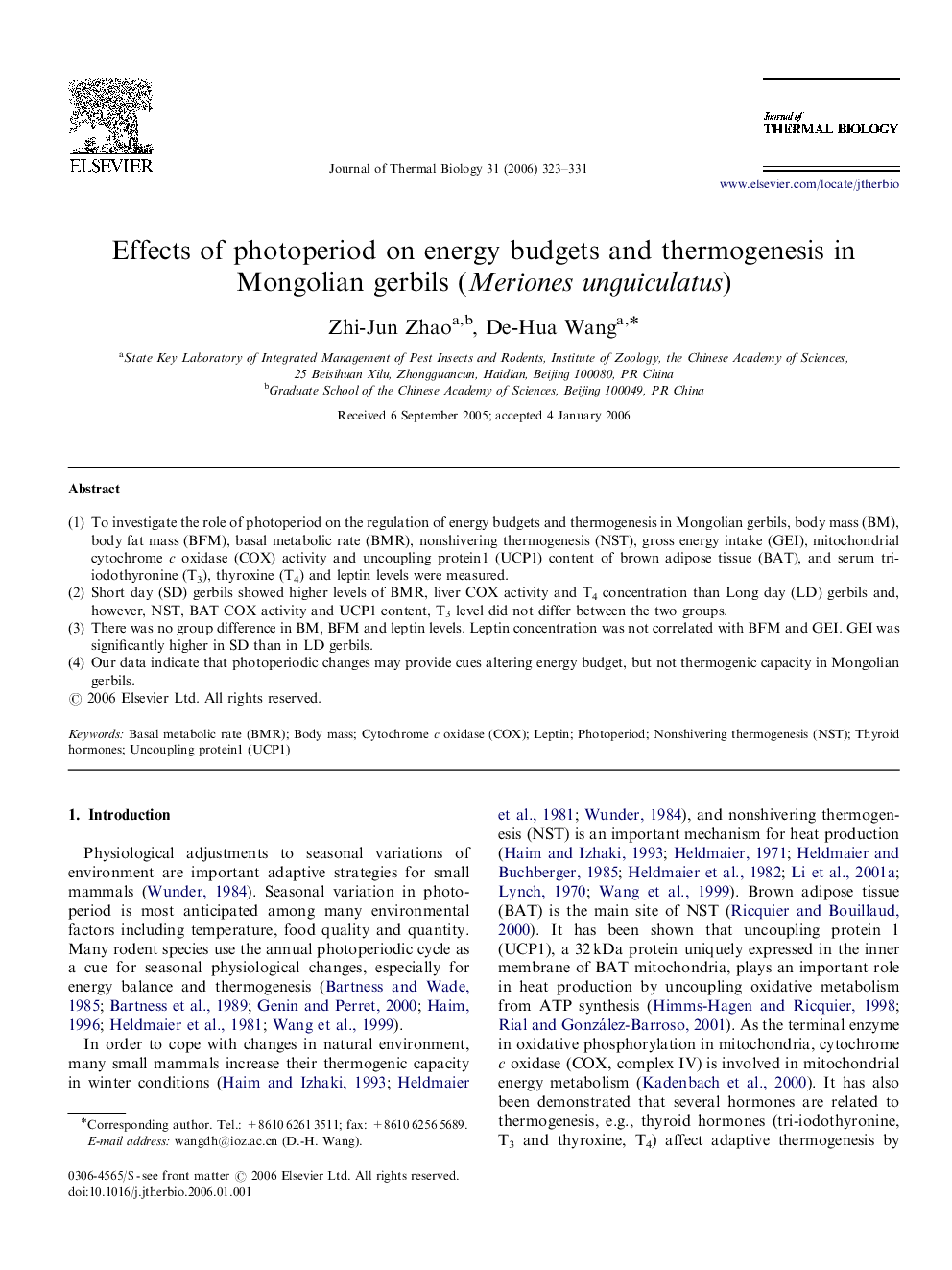| Article ID | Journal | Published Year | Pages | File Type |
|---|---|---|---|---|
| 2843844 | Journal of Thermal Biology | 2006 | 9 Pages |
(1)To investigate the role of photoperiod on the regulation of energy budgets and thermogenesis in Mongolian gerbils, body mass (BM), body fat mass (BFM), basal metabolic rate (BMR), nonshivering thermogenesis (NST), gross energy intake (GEI), mitochondrial cytochrome c oxidase (COX) activity and uncoupling protein1 (UCP1) content of brown adipose tissue (BAT), and serum tri-iodothyronine (T3), thyroxine (T4) and leptin levels were measured.(2)Short day (SD) gerbils showed higher levels of BMR, liver COX activity and T4 concentration than Long day (LD) gerbils and, however, NST, BAT COX activity and UCP1 content, T3 level did not differ between the two groups.(3)There was no group difference in BM, BFM and leptin levels. Leptin concentration was not correlated with BFM and GEI. GEI was significantly higher in SD than in LD gerbils.(4)Our data indicate that photoperiodic changes may provide cues altering energy budget, but not thermogenic capacity in Mongolian gerbils.
